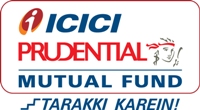How to Build the Perfect Investment Portfolio

Every investor’s ultimate financial dream is building the perfect and right investment portfolio. The perfect portfolio is one that mitigates risk, takes care of your short and long term financial goals and is profitable at the same time. A question that a lot of investors may have is the need to have a portfolio at all. Investing should be enough, right? Investments generate returns and that should be enough to secure your future. It is as simple as that or is it? What if you need a little more than just investments? A way to watch all your investments and how they all perform together to generate the cumulative return. Have you ever thought about the various investments you have done with various AMCs and Insurance Companies and how difficult it becomes to keep track of every single of them? A lot of times you may even forget that you made certain investments because they are all so haphazard.
To maintain a certain order in your financial life you need a portfolio. So what exactly is a portfolio? A portfolio contains details of all your investments across all asset classes, Insurance and Asset Management Companies in one place. Going thought the portfolio should be enough to tell you where you stand financially.
- A good portfolio will have some investments in all major asset classes. It will draw the thin line between diversification and crowding.
- A good portfolio allows an investor to mitigate risk by adjusting declining returns of one class with the rising returns of another.
So how can an investor build the perfect portfolio?
Determining the Correct Asset Allocation
It is the process of allocating all your investments in various asset classes. How do you decide the allocation? The allocation will be decided by few key factors: Your current age, investment need, future financial goals and the current market condition. The first factor is very important as it decides how much exposure we should have in each asset class depending upon our age. The younger we are the more exposure should be in equities. Some financial Planners use a thumb rule “100 - your age”. Simply put, this means if your age is 30 then you should have atleast 70% exposure in equity oriented investments (100 – 30 yrs). The other important factors, when you are young, is to figure out the purpose of your investments – It could be your retirement planning, your home, Planning for your kids education and so on. In a nutshell, you must invest with some future goals in mind and rough timeline when you would want to redeem these investments. That corpus of the goal and period of investment determines the allocation in each asset class. For example, if it is a short term goal you will want to incline heavily towards short term plans and avoid equity oriented investments. However if it is a long term goal equities or equity oriented mutual funds will be the go to investments.
We are currently in a bear market like situation. You may have had a balanced portfolio of Equities and Debts. However, bear markets are the best time to invest more in Equities because sooner or later the bear markets will give way to bull markets and that would be the time you will be able to make neat profits on these investments. The best to maintain profitability would be to follow the market curve rather than outdo the market by timing. However, the investment in equities or debts should be in accordance with your asset allocation and risk taking capacity.
Crowding Vs Diversifying
There is a common misconception among investors that the more number of stocks and funds are available in a portfolio, the risk gets distributed and the profit is higher. This is far away from the truth. There is a fine line between a well diversified portfolio and an overly crowded portfolio. A famous rule says that if you have more funds than the number of fingers, then the chances are your portfolio is overcrowded. While there is no need to take the rule literally, it could act as a guide.
A lot of investors invest in a number of funds with the same features or investment philosophy - like multiple investments in Large Cap funds will not yield you different results. Each fund will have more or less similar performances. No single fund will have a miraculous performance when the markets are not doing well. Instead of multiple large cap investments, you might want to invest in Balanced Funds or Diversified Equity Funds. That is the difference between crowded and diversified portfolio.
How Well You Know the Investments?
You cannot make a portfolio profitable unless you know about every element in it. Are you aware of every mutual fund in your portfolio? If there is a fund or funds about which you have no idea and cannot describe it beyond “I think it will generate high returns because my friend said it has been performing well”, then the truth is you have no idea about the fund. If you do not know what the fund is all about and what it is doing in your portfolio, then it is time to review it. Since you have no idea how it works, you cannot determine whether you need it.
Are the Investments Linked to Your Goals?
If you come across a fund or a segment in your portfolio, it is imperative to have a goal associated with it. If there are certain investments that have been added in your portfolio to serve no purpose except to be present, then you should start analysing its need and how it is adding to your profit. If it is not adding to your profit but adding to your expenses of having to pay ECS or holding charges or any other payment, then you might want to axe it and replace it with something that might add greater future potential. Unless you have specific goals associated with funds and a rough timeline of investments, you cannot work out your portfolio. In fact the very basis of having an investment in any scheme or fund should be only done if it is aligned to your goals.
How often do you Rebalance?
If you have built your portfolio a while back and have not glanced upon it, the chances are it is not as profitable as you have liked it to be. The market conditions keep changing and the changes affect your portfolio. This is why a portfolio requires watch and occasional readjustment. Readjustment is not an act that has to be carried out frequently because that is unnecessary. It needs to be carried out so that portfolio stays in sync with the current market conditions. You cannot have a portfolio inclined towards Debt funds if you have long term financial goals to achieve. Similarly, if you have invested in Equity Funds and you want to stay invested only for less than five years, then it is a not a correct option to have in your portfolio.
If in current market conditions, you are considering rebalancing, then in bear markets you have to invest in Equities so that you can make the best out the Bull markets which will soon follow. If your portfolio is geared to meet your risk appetite and you have a fixed ratio of Equity and Debt then rise in Equity markets will require you to balance the ratio to avoid the increase in percentage of Equities. Rebalancing is like pruning. It needs to be carried out to help better growth.
An annual rebalancing or reviewing the portfolio is a good exercise.
Take Care of your Taxes
No investment portfolio can ever be perfect if you do not have tax saving investments in it. In fact the very first move to build the portfolio should have tax saving considerations in it. While constructing your portfolio you should have your tax planning in mind and should select investments which not only saves tax but also provides higher return and easy liquidity. For example – if you are a tax payer and your asset allocation tells you to invest in equities then you should invest in ELSS Schemes (Equity Linked Savings Schemes) of Mutual Funds in lieu of Diversified Equity Funds or Large Cap Funds. The reason is simple – all these are equity oriented investments but the one in ELSS saves you taxes under section 80CC.
Conclusion
Your portfolio acts as a lifeline in the financial world. Creating a profitable investment portfolio is synonymous to building a strong foundation which ensures that you stay secure no matter what happens. The task of creating a profitable portfolio may sound like a daunting one and you may not capable of carrying it out. As investors, it is alright to accept that you need help because as much as you would like to invest as you are no expert. Instead of looking for amateur advice from friends and family, it is best to seek professional knowledge from people who are qualified to give you that. Find a financial advisor and pay him a professional fee to help you build a investment portfolio that is best suited to your needs. This will ensure a profitable portfolio and expert advice at every stage of investment.
RECOMMENDED READS
LATEST ARTICLES
- Why you need to have hybrid mutual funds in your portfolio: Different types of funds Part 2
- Why you need to have hybrid mutual funds in your portfolio: Misconceptions Part 1
- Which is the best time to invest in mutual funds
- Economic slowdown: Is it real and what should you do
- Importance of liquidity in investing: Mutual funds are ideal solutions
An Investor Education Initiative by ICICI Prudential Mutual Fund to help you make informed investment decisions.
Quick Links
Follow ICICI Pru MF
More About ICICI Pru MF
POST A QUERY




